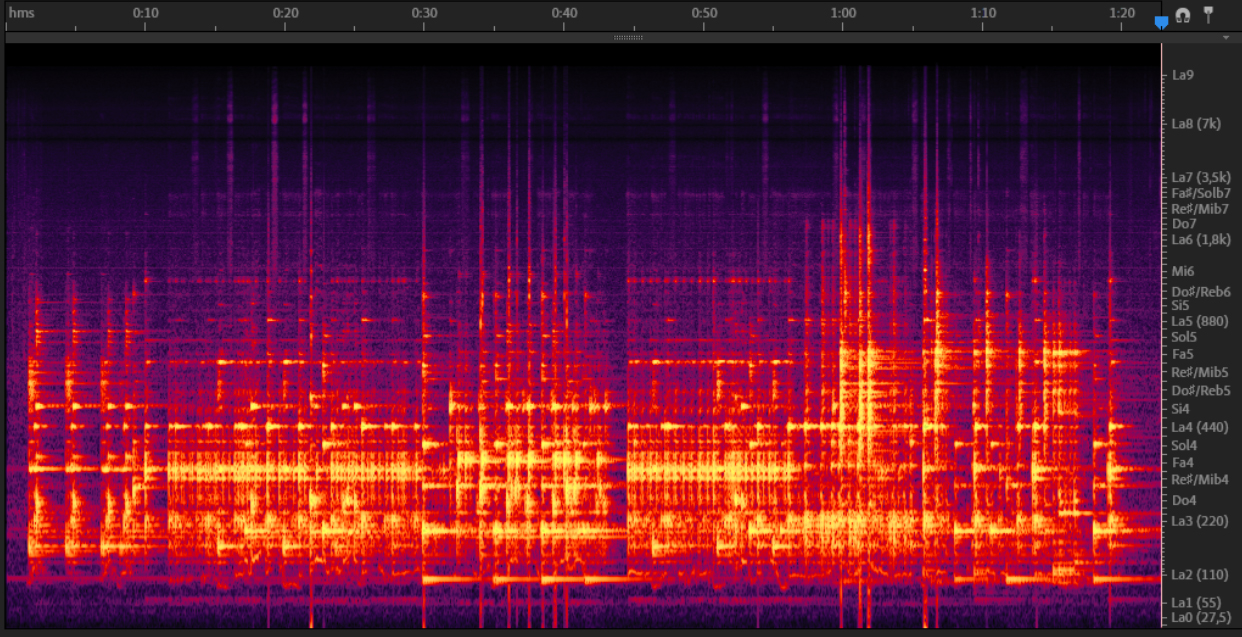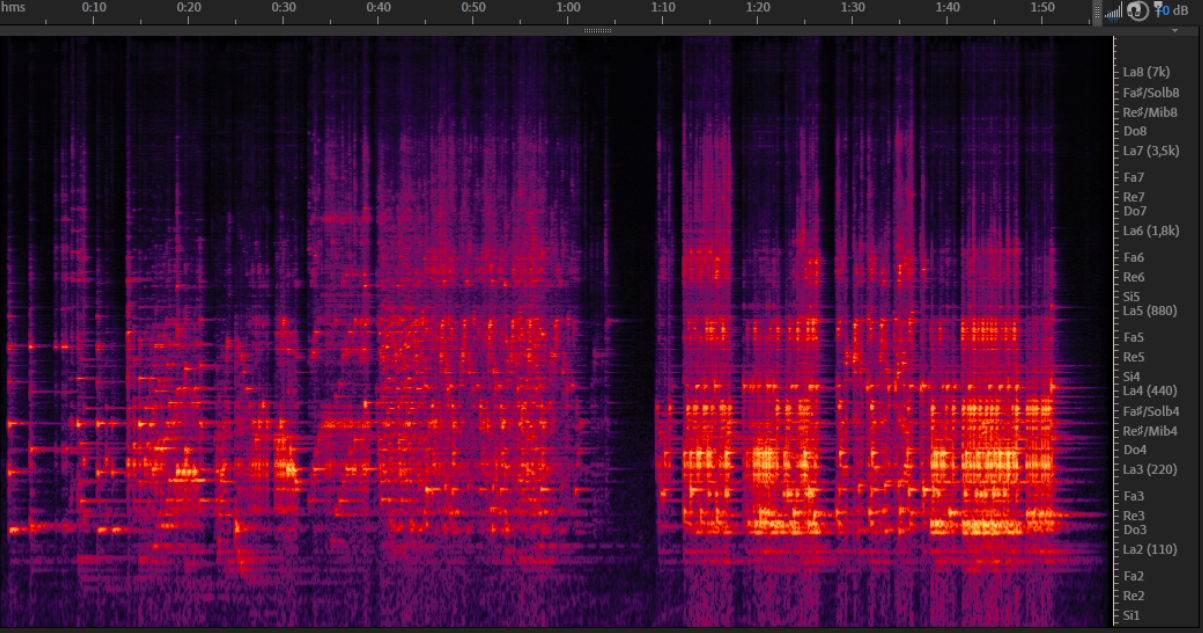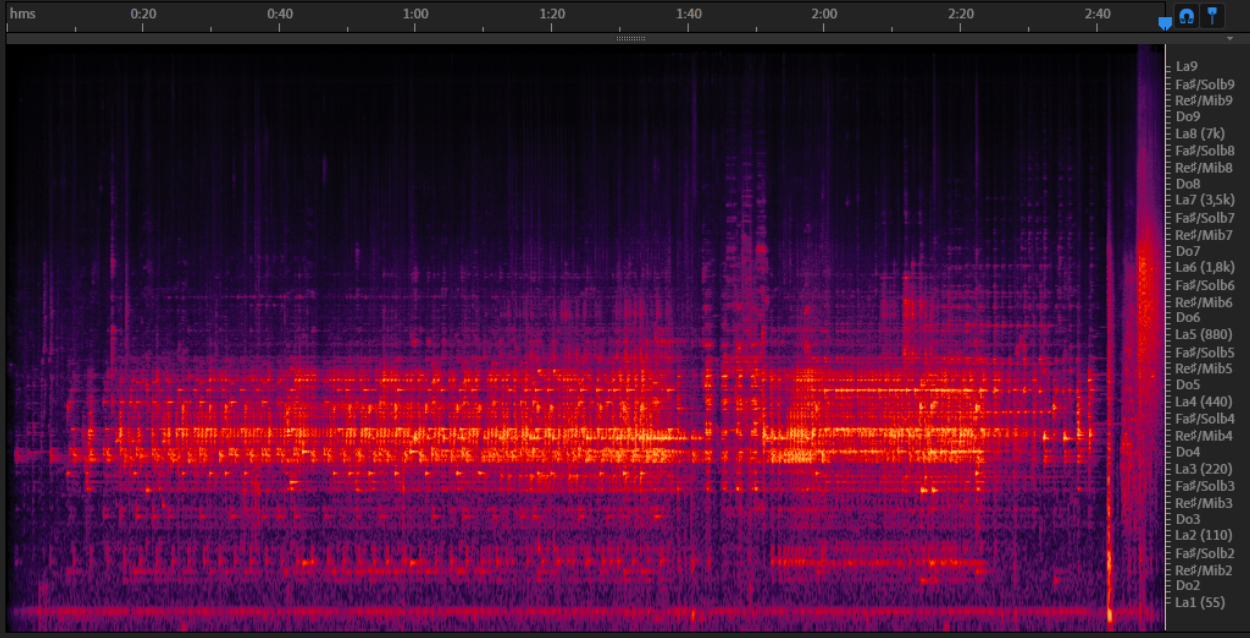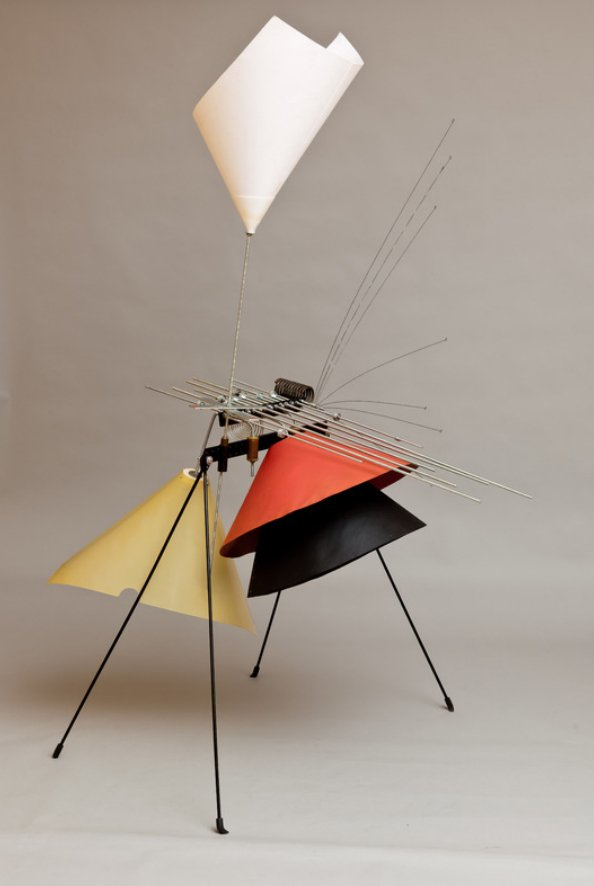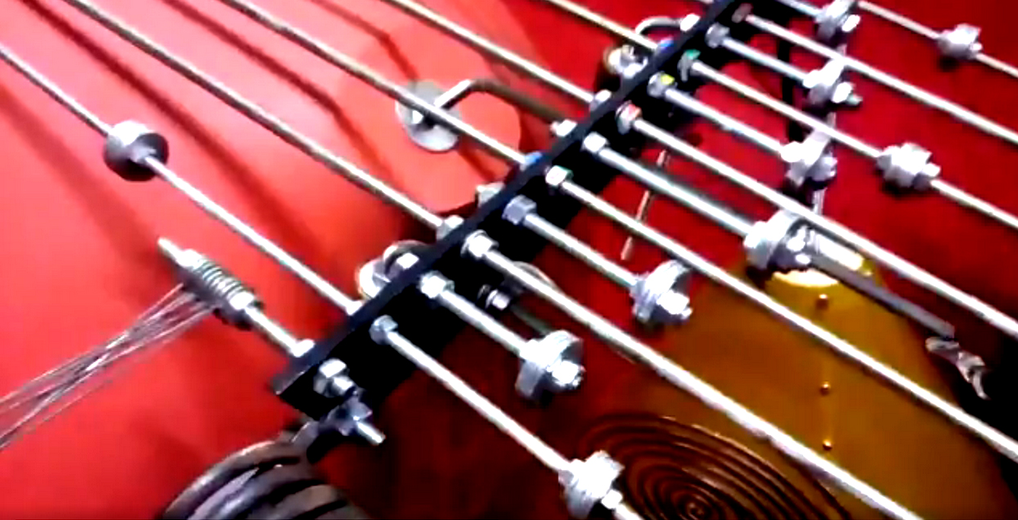Après-baschet multitimbral sound sculptures
Multifòson, by Andreu Ubach, circa 2010
Oscillators: Several steel rods, 4, 5, 6 mm in diameter, some of them straight, some of them with weights along their lengths and some short mushroom rods. Two asymmetrically clamped iron plates are also connected to the system. All of these elements are bolted in two different layers to a long iron gum, suspended on a rubber pipe to a stand.
Activation: Percussion
Radiation: Three thick cardboard cones with wooden core pieces.
Gamut: Found xentonal. Andreu recalls the elaboration of the timbre/tonal range as an intuitive process of trial and error, allowing the more resonating sounds and more interesting timbres to bloom and adding more elements to expand the palette. It is particularly diverse in timbre and pitch range, from a solid low end to moderate high range pitches.
Resonators: A thick coil spring adds resonance to the system. Each oscillating element functions as resonator for the others.
Andreu Ubach’s Multifòson is a self-made après-Baschet percussion, designed and built by Andreu, following his timbral intuition (under the advisement of François Baschet), and accommodating the layout according to his playing gestures and grouping the pitches and timbres according to his personal preferences rather than following any particular scale or linear order of frequencies.
Andreu Ubach passed away during the creation of this presentation. He was a great musician, intuitive instrument builder, and a friendly teacher, almost a magician of sound communication who was always connecting with all kinds of people. We hope to contribute to the appreciation of his achievements and will work to keep his memory alive, both in its own right and as a part of the Baschet history.
Chollet B, Circa 1990
Oscillators: Several iron rods, 6 mm in diameter, some of them straight, some of them bent, some of them with weights along its lengths and some short mushrooms ones. Three asymmetrically clamped iron plates are also connected to the system. All of these elements are bolted to a long iron gum, suspended on elastic strings for isolation.
Activation: Percussion
Radiation: Three thick cardboard cones with wooden core pieces.
Gamut: Found xentonal, lots of contrast, no particular tuning to be identified.
Resonators: A handmade flat spiral adds resonance to the system. Two of the rods feature straight piano wire whiskers to add higher overtones.
In the video we can appreciate the range of different timbres, all of them reacting to a common resonance, even the dryer sounds of the plates are prolonged by the overall system, and the fact that it is sonically unpredictable, as might be anticipated by the visually disparate appearance of the elements.
Multitimbral Settings
We have seen how one type of rod can produce different timbral complex spectrums, and we consider pieces such as Kawakamiphone, Watanabephone, Amiens, and Brontosaur to be multitimbral since those pieces offer a variety of timbres. However, the Baschets referred to some of their sound sculptures as being explicitly “multitimbral” because they featured different kinds of settings with markedly different timbral qualities, defined explicitly during fabrication, and because the brothers considered the sonic gamut to include a collection of values, not particularly ordered by pitch but by timbral affinities and contrasts.
In this section of examples we present a DIY Multitimbral Kit and two Chollet pieces, named after the percussionist Jacques Chollet, who collaborated with the Baschets for a period of time. In the several versions of those devices we can see all the systems we have discussed previously: Threaded Rods, Threaded Rods with Weights on Their Free Ends, Threaded Rods with Weights Along Their Lengths, Doubly Coupled Rods, Fixed Plates, and Bent and Curved Rods.
Chollet A, 1993
Oscillators: Several steel threaded rods, with and without weights along their lengths, short steel mushroom rods, doubly coupled rods, two piano wires stretched as strings, a handmade flat spiral, a short and thick coiled spring. All of this is clamped to a long steel gum suspended on two rubber pipes and balanced with a string system for better isolation.
Activation: Percussion
Radiation: Three thick cardboard cones with wooden core pieces.
Gamut: Multitimbral. There is a major arpeggio on the N-fitting double rods, so we tuned the string and some of the longer rods to match that. The whole setting is modular and can be altered. The video shows, better than any description, how every segment of each rod rings.
Resonators: the springs can be activated as oscillators, but their mission is primarily to add resonance and prolong the sounds of the rods. Two of the rods feature straight piano wire whiskers to add higher overtones.
In the video we can perceive the tonal clarity of the doubly coupled rods as compared to the bell-like sound of rods or the compressed sound of the mushrooms.
Kit Multitímbric, François Baschet in collaboration with A.Ubach and M.Ruiz, 2010
Oscillators: Several iron threaded rods, 5 and 6 mm in diameter, some of them simple, some of them with weight along their length and some shorter mushroom rods. All these rods are clamped to the pre-drilled iron DIY kit gum, suspended with rubber pipes on a simple leg structure. There is also a set of clampled iron plates forming a cross, isolated from the rest of the oscillating system with a rubber pipe.
Activation: Percussion
Radiation: One epoxy sheet cone with a wooden core piece and two cardboard cones with fiberglass core piece for the rod system; one cardboard cone with a funnel core for the cross of clamped plates. All those cones deliver the clean and warm sound of the oscillators, slightly colouring it but not adding noticeable reverberation. The size of cones cuts off the lowest frequencies created in the rod system, offering a midrange resonant palette with some moderate low end.
Gamut: Xentonal and multitimbral (listening to the audio file is better than reading a written description). The rods can be rearranged, since these DIY kits are designed to be modular and customizable.
Resonators: a metal handmade flat spiral, an iron handmade thick coiled spring, a set of 7 piano wire whiskers that increase the presence of certain overtones, sometimes reminiscent of a steel pan drum.
Kit Multitímbric, donated to the Museum of Music of Barcelona as a Baschet Original extended DIY kit, was made in 2010 by François Baschet, Andreu Ubach, and Martí Ruiz. We implemented the first cardboard cones with hard resin fiberglass core mounting pieces, an idea that we developed with Vicent Matamoros.
Circulòfon après-Baschet, by Martí Ruiz, 2010
Oscillators: Steel rods connected to a heavy steel ring, insulated from the stand with inner bike tube strips.
Activation: Percussion with wooden mallets covered in tire strips. The rotary system (manual) allows for lots of fun interactions, producing cascading sequences or introducing an element of randomness by spinning it and playing without knowing which rod you will strike.
Radiation: Two hard cardboard cones with fiberglass-resin core pieces offering a clean frequency response, resulting in a quite warm and full sound.
Gamut: This was our first medium size piece, made under the supervision and guidance of François Baschet. Here we tuned the long side of the rods using a conventional pentatonic scale (C,D,E,A,G, in several octaves). The leftover upper segments of the rods accumulated weights in several different regions to explore the multitimbral range with no preconceived idea in mind, just letting intuition and discoveries prevail. The tuning of the longer segments of the rods created a very resonant system, so we can consider all the rods to be resonators of each other, offering a particular consistency to the sound and notable built-in reverberation.
Axolotl Multitimbral Percussion, après-Baschet by Daniel Schmidt, Sudhu Tewari, and Martí Ruiz, 2019
Oscillators: Several iron rods and some straight ones, N-fitting doubly coupled rods, some with weights along their lengths and some short mushrooms, bolted into a massive aluminum gum, suspended on ropes to an external pipe frame on both sides and at the back of the speaker.
Activation: Percussion
Radiation: A hand-folded stainless steel sheet, about 0.8 mm thick.
Gamut: This is also a multitimbral gamut, designed to showcase many different timbral qualities using only 6 pitches from Daniel Schmidt’s harmonic series pelog scale. Some rods’ multiphonic features have been tuned to match two (or even three) tones of that Pelog scale, so we can say we have succeeded in fine tuning the overtones to create a chord or a cluster sound. The piece shows how the same perceived pitch can be presented along with different complex envelopes. One particular innovation we accomplished here is the tuning of both sides of the rods, by precisely cutting the lengths of the rods and adding weights with washers, to obtain more compact oscillating segments on both sides of the gum, thus we have no leftover segments of rods with unintended sounds.
Resonators: Each oscillating element functions as a resonator for the others. The stainless sheet radiator also adds a lot of resonance and reverberation, reacting dynamically to the activation intensity and offering a range from sweet, deep sounds to powerful, overdriven sounds.
Our Axolotl Multitimbral percussion, made in collaboration with Daniel Schmidt and Sudhu Tewari, was shown for the first time at the San Francisco Center For New Music in January 2019.
Figure 84. Audio recording and spectrogram of Kit Multitímbric, an improvisation by Ubach and Ruiz. (Ruiz 2015).
Figure 80. Video recording of Chollet A. Source: https://www.youtube.com/watch?v=883sdy_PrIU&t=9s
Figure 81. Video recording of Chollet B. Source: https://www.youtube.com/watch?v=8tfKy-SrOLo&t=11s
Figure 82. Kit Multitímbric. Unknown photographer. Source: Museu de la Música de Barcelona, 2010. https://cataleg.museumusica.bcn.cat/detall/fons_instruments/H491886/?resultsetnav=5f2b18d56f970, Consulted on August 6th, 2020.
